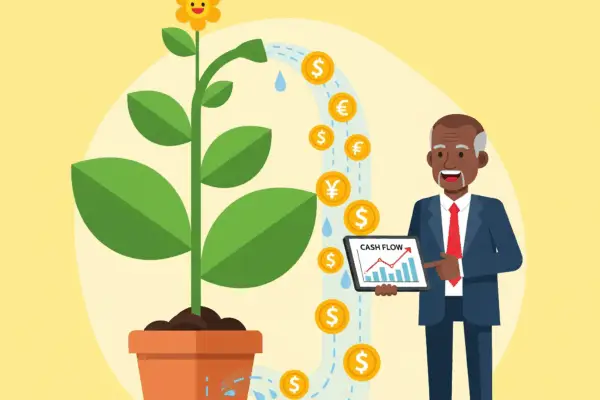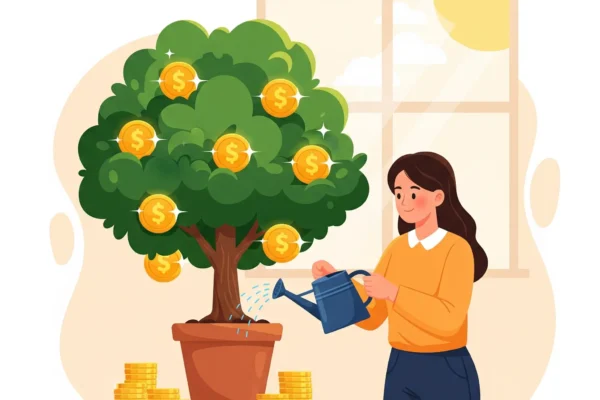Ah, my friends, fellow entrepreneurs, the titans of tenacity, the heartbeat of our local economies – you, the magnificent owners of small businesses! Lean in, because today, we’re not just talking about transactions; we’re talking about transformation. We’re delving into the very DNA of sustainable success, the secret sauce that separates the fleeting from the flourishing. We’re venturing “Beyond the Sale” to forge connections so powerful, so genuine, that they transcend mere commerce and blossom into lifelong loyalty.
For too long, the narrative in the business world has been fixated on the acquisition of the new. The dazzling campaigns, the aggressive marketing, the constant pursuit of the next lead. And don’t get me wrong, customer acquisition is absolutely vital. You can’t have a business without customers, right? But here’s the profound truth, the golden nugget that will redefine your operational philosophy and supercharge your profitability: the true gold isn’t in finding new customers; it’s in *keeping* the ones you already have.
Think about it. Every time you make a sale, that’s not the finish line. Oh no, my astute strategists, that’s merely the starting gun. The real race, the marathon of sustained growth, begins the moment that customer walks out your door, clicks away from your site, or hangs up the phone. Their experience, their feelings, their perception of your small business in that moment, and every moment thereafter, dictates whether they return, whether they become a repeat purchaser, and, ultimately, whether they become your most powerful, unpaid marketing force: the loyal advocate.
In the cutthroat arena of modern business, where giants loom and competition is fierce, the small business holds an incredible, often underutilized, superpower: the ability to build authentic, personal relationships. You’re not a faceless corporation; you’re a human, a neighbor, a dedicated individual pouring your heart and soul into your craft. This inherent advantage, if harnessed correctly, can build an unshakeable foundation of customer loyalty that even the biggest players can only dream of replicating.
Why is this so crucial for your small business? Let’s talk numbers, because while I speak from the heart, I also speak from a place of strategic insight. It costs significantly more to acquire a new customer than it does to retain an existing one – some estimates put it at five times more, sometimes even higher. And loyal customers? They spend more, they buy more frequently, and they are far more forgiving if a minor hiccup occurs. They become your evangelists, spreading positive word-of-mouth like wildfire, attracting new customers organically, effortlessly. Imagine the ripple effect! A dedicated customer base isn’t just a revenue stream; it’s a living, breathing, referral engine.
So, how do we transcend the transactional and build these deep, enduring bonds? How do we move from “customer” to “confidant,” from “sale” to “saga”? My friends, I’ve distilled the essence of customer loyalty into five simple, yet profoundly powerful, strategies that any small business, regardless of industry or size, can implement starting today. These aren’t abstract theories; these are actionable blueprints for building a fortress of loyalty around your precious enterprise. Let’s dive in, shall we?
Strategy One: The Art of Hyper-Personalized, Empathetic Service – Beyond Expectation, Into Memory
Let’s be unequivocally clear: customer service is not a department; it is the beating heart of your entire small business. It’s not about being polite; it’s about being profoundly impactful. In today’s hyper-connected world, good service is the baseline; exceptional service is the differentiator. And for a small business, “exceptional” means moving beyond a mere pleasant interaction into an experience that feels tailor-made, deeply understood, and genuinely cared for.
This isn’t about grand gestures every time; it’s about the accumulation of small, meaningful moments. It’s about remembering a customer’s name, their preferred coffee order, the type of fabric they always gravitate towards, or the specific problem they mentioned last time they visited. It’s about taking the extra 30 seconds to genuinely listen to their story, not just their request. It’s about being present, truly present, when they engage with your small business.
How do you achieve this “hyper-personalization”? It starts with observation and meticulous (but unobtrusive) data gathering. For a retail small business, this might mean jotting down notes in a simple CRM system – their birthday, their favorite product, a unique interest they mentioned. For a service-based small business, it’s recalling the details of their previous projects, anticipating their future needs, and checking in proactively. Did they mention they were going on vacation? A quick, “Hope you had a great trip!” upon their return can feel incredibly personal and memorable.
Empathetic service goes hand-in-hand with personalization. It means understanding their situation, stepping into their shoes, and addressing their needs with genuine care. If a customer has a problem, don’t just solve it; validate their frustration, express understanding, and then go above and beyond to make it right. A mistake handled brilliantly can actually build more loyalty than if no mistake had occurred at all. Why? Because you’ve demonstrated your commitment to their satisfaction, your integrity, and your willingness to stand behind your product or service. This level of care transforms a one-time buyer into a devoted fan of your small business.
Train your team, even if it’s just you, to think like a customer. Empower your employees to make decisions on the spot to resolve issues, without having to escalate every minor complaint. Nothing erodes goodwill faster than a customer being shunted from one person to another, repeating their story multiple times. Give your staff the autonomy and the trust to turn a negative into a positive, right then and there. This not only delights the customer but also empowers your team, fostering a culture of excellence within your small business.
Remember, technology can support personalization, but it cannot replace the human touch. Automated emails can reference past purchases, but a handwritten thank-you note from the small business owner? That’s priceless. AI chatbots can answer FAQs, but a warm, knowledgeable human voice offering a solution? That builds unbreakable bonds. Your small business has the inherent advantage of being able to deliver this human-centric, heart-first service. Leverage it relentlessly. Make every interaction an opportunity to leave an indelible mark of care and genuine connection.
Strategy Two: Cultivating a Thriving Brand Community – From Customers to Crusaders
Imagine your small business not just as a place where transactions occur, but as a vibrant hub, a gathering place for like-minded individuals who share a passion, a purpose, or a particular interest. This is the essence of building a brand community, and it’s one of the most powerful engines of loyalty you can ignite. When customers feel a sense of belonging, a connection not just to your product or service but to each other through your brand, they transform from mere buyers into enthusiastic advocates, true crusaders for your small business.
This isn’t about forced interactions; it’s about creating natural opportunities for people to connect, share, and engage around your brand’s values or offerings. For a coffee shop, it might be a regular open mic night or a local artist showcase. For a small business selling artisanal goods, it could be workshops on crafting or sourcing materials. For an online small business, it could be a dedicated Facebook group, a lively Discord channel, or interactive live Q&A sessions where customers can share tips, ask questions, and celebrate successes related to your products.
The key here is fostering participation, not just broadcasting messages. Encourage user-generated content: ask customers to share photos of how they use your products, stories of how your service helped them, or reviews detailing their experience. Feature their content on your social media channels or in your newsletters. When you celebrate your customers, they feel seen, valued, and more deeply connected to your small business. This reciprocal relationship builds immense goodwill.
Consider hosting small, intimate events. These don’t have to be expensive or elaborate. A tasting event for a local food small business, a book club for a bookstore, a demo day for a tech gadget small business, or a Q&A session with an expert related to your niche. These events, whether online or in-person, provide a tangible touchpoint for your community to coalesce, fostering relationships not just between customers and your brand, but also among the customers themselves. When they feel part of something bigger than themselves, something that revolves around your small business, their loyalty becomes deeply ingrained.
Listen to the conversations happening within your community. What are their shared interests? What problems are they trying to solve? What successes are they celebrating? This invaluable feedback can inform your product development, your marketing messages, and even the future direction of your small business. Your community isn’t just a cheering section; it’s a living, breathing focus group, eager to contribute and shape the evolution of a brand they feel invested in.
Building a brand community takes time, authenticity, and consistent effort. It requires a genuine interest in your customers as people, not just as transactions. But the payoff is immense: a loyal cohort of customers who will not only return time and again but will passionately champion your small business, driving organic growth and creating a powerful, resilient foundation for your future success. They become your extended family, and that, my friends, is truly beyond the sale.
Strategy Three: Proactive Value Delivery & Thought Leadership – Give Before You Get
In a world saturated with sales pitches and promotional noise, how does a small business cut through the clutter and truly capture attention and loyalty? The answer lies in a fundamental shift in mindset: stop focusing solely on selling and start focusing relentlessly on serving. This means proactively delivering value to your audience, even before they become a paying customer, and establishing your small business as a trusted authority, a beacon of knowledge, a true thought leader in your niche.
Think of it as giving before you get. Instead of constantly pushing your products or services, consistently provide useful, insightful, and relevant information that helps your target audience solve their problems, learn something new, or simply make their lives a little bit better. This isn’t just about charity; it’s about building trust, demonstrating expertise, and fostering a sense of reciprocity that naturally leads to loyalty.
How does a small business become a proactive value deliverer and a thought leader? Content, my friends, is king, queen, and the entire royal court. This could take many forms:
• Blogging: Write articles that answer common questions your customers have, offer practical tips, or explore industry trends. For example, a small business selling eco-friendly products could blog about sustainable living tips, recycling hacks, or the environmental impact of various consumer choices.
• Newsletters: Create a compelling email newsletter that isn’t just about promotions. Share exclusive content, behind-the-scenes glimpses of your small business, curated resources, or insightful commentary relevant to your audience’s interests.
• Workshops or Webinars: Host free (or low-cost) online or in-person workshops that teach a valuable skill or share expert knowledge related to your offerings. A local bakery could offer a bread-making demo; a marketing small business could host a webinar on social media basics.
• How-To Guides & Checklists: Develop downloadable resources that simplify complex tasks or provide actionable steps. A financial planning small business could offer a budget template; a home decor small business could create a checklist for decluttering.
• Educational Videos: Create short, engaging videos on platforms like YouTube or Instagram Reels that demonstrate product usage, explain concepts, or offer quick tips.
The key is consistency and relevance. Your content must genuinely address the needs and interests of your target audience. It shouldn’t always lead directly to a sale; sometimes, the only goal is to provide value, build trust, and demonstrate your small business’s commitment to excellence and expertise.
When you consistently deliver value, you build a powerful reservoir of goodwill. Customers (and potential customers) begin to see your small business as more than just a vendor; they see you as a trusted advisor, a reliable source of information, a helpful friend. This position of authority and helpfulness makes them far more likely to turn to you when they *are* ready to make a purchase. They won’t just buy your product; they’ll buy into your expertise, your insights, and the generous spirit of your small business.
This strategy plays directly into the strengths of a small business. You’re nimble, you’re close to your customers, and you can respond quickly to their evolving needs and questions. You can create authentic content that resonates, without the layers of corporate bureaucracy that often stifle genuine connection. Embrace your role as an educator and a guide. Give generously of your knowledge, and watch as loyalty, like a mighty river, flows back to your small business.
Strategy Four: Designing Irresistible Loyalty Programs – Beyond the Punch Card
“Buy ten coffees, get one free.” The classic punch card. It’s a staple of loyalty programs, and while it has its place, it’s often just scratching the surface of what a truly irresistible loyalty program can achieve for your small business. To build lifelong loyalty, your program needs to be more than just a discount mechanism; it needs to be an extension of your brand’s value, an experience that delights, and a powerful incentive for continuous engagement.
The goal is to make your most loyal customers feel genuinely special, appreciated, and recognized. How do we move beyond the utilitarian and into the realm of the truly irresistible?
1. Experiential Rewards: Instead of just offering discounts or free products, think about offering unique experiences. For a small business selling outdoor gear, this could be an invitation to an exclusive hiking trip with the owner. For a salon, it might be a complimentary, personalized styling consultation. For a bookstore, it could be an invitation to an author meet-and-greet. These experiences create memories and strengthen emotional bonds far more effectively than a mere percentage off.
2. Tiered Programs: Introduce different levels of loyalty based on spending or engagement. As customers move up the tiers (e.g., Bronze, Silver, Gold), unlock progressively better perks. This gamification element encourages customers to strive for higher levels, deepening their commitment to your small business. Higher tiers could unlock early access to new products, exclusive discounts, priority service, or even direct access to the small business owner for personalized advice.
3. Personalized Offers: Leverage the data you collect (from Strategy 1!) to offer rewards that are highly relevant to individual customers. If a customer frequently buys pet supplies, don’t send them a discount on gardening tools. Send them an exclusive offer on premium dog food or a new toy they might love. This shows you understand their needs and are paying attention, making the loyalty program feel truly bespoke to your small business’s customers.
4. Non-Transactional Rewards: Reward behaviors beyond just purchasing. Does a customer consistently refer new business? Give them a special perk. Do they engage actively on your social media? Acknowledge it with bonus points or a small gift. Do they leave glowing reviews? Reward them. This expands the definition of “loyalty” to encompass true brand advocacy, not just spending.
5. Seamless Experience: Whatever program you design, make it incredibly easy for customers to join, track their progress, and redeem rewards. A clunky, frustrating system will deter participation. Whether it’s a simple digital punch card app, an integrated POS system, or a personalized online portal, simplicity is key. For a small business, this often means choosing a user-friendly platform or even managing it manually with personal touches.
6. Surprise & Delight: Occasionally, surprise your most loyal customers with unexpected gestures – a small, relevant gift, a personalized note, or an unannounced upgrade. These “delight moments” are incredibly powerful because they are unexpected and feel genuinely generous, reinforcing the special relationship they have with your small business.
Remember, a loyalty program is not just about giving things away; it’s about investing in the long-term relationship with your customers. It’s about recognizing and celebrating their commitment to your small business, making them feel valued, and providing compelling reasons for them to choose you again and again. For a small business, the ability to be flexible, creative, and intimately connected to your customer base gives you an unparalleled advantage in crafting truly irresistible loyalty programs. Make your customers feel like VIPs, because to your small business, that’s exactly what they are.
Strategy Five: The Power of Listening – Feedback Loops & Continuous Improvement
Imagine trying to navigate a dense fog without a compass, relying solely on your intuition. That’s what running a small business without actively listening to your customers is like. Feedback isn’t just about resolving complaints; it’s a goldmine of insights, an essential compass for continuous improvement, and one of the most potent tools for cementing lifelong customer loyalty. When customers feel truly heard, understood, and that their input genuinely matters, their connection to your small business deepens immeasurably.
Too often, small business owners dread feedback, especially the negative kind. But here’s a mindset shift: view negative feedback not as a personal attack, but as a priceless gift. It’s an opportunity to identify weaknesses, fix problems before they escalate, and demonstrate your commitment to excellence. A customer who takes the time to give you critical feedback cares enough to want you to succeed. They’re giving you a second chance, an invitation to turn a potential detractor into an even stronger advocate.
So, how do we establish robust feedback loops for your small business?
1. Actively Solicit Feedback: Don’t wait for it to come to you. Proactively ask for it.
• Simple Surveys: After a purchase or service, send a short, focused survey (e.g., Net Promoter Score, a few open-ended questions). Keep it brief to maximize completion rates.
• Direct Conversations: Train yourself and your team to ask open-ended questions during interactions: “How was your experience today?” “Is there anything we could have done better?” “What would make this product even more useful for you?”
• Online Reviews & Social Media: Monitor platforms like Google My Business, Yelp, Facebook, and industry-specific review sites. Respond to all reviews, positive and negative, showing you’re engaged and listening.
• Suggestion Boxes: For a physical small business, a literal suggestion box (or a digital equivalent on your website) can be effective.
2. Make It Easy to Provide Feedback: Reduce friction. Provide multiple channels – phone, email, in-person, social media, website forms. Ensure your contact information is readily available. The easier it is for a customer to voice their thoughts, the more likely they are to do so.
3. Create a Culture of Welcome: Internally, within your small business team, cultivate an environment where feedback is welcomed, discussed constructively, and seen as a pathway to growth, not a source of blame. Encourage all team members to share insights gleaned from customer interactions.
4. The Crucial Step: Act on Feedback and Communicate! This is where most businesses fall short. Collecting feedback is only half the battle. The true power lies in *acting* on it and then *communicating* those actions back to your customers.
• Address Issues Promptly: If someone has a complaint, respond swiftly, empathetically, and work towards a resolution.
• Implement Changes: If multiple customers suggest a new product feature, a different store layout, or an improvement to your service, seriously consider implementing it.
• Tell Them What You Did: This is incredibly important. When you make a change based on customer feedback, announce it! “You asked, and we listened! Based on your feedback, we’ve now…” This reinforces the message that their voice truly matters to your small business and strengthens their feeling of ownership and loyalty. It turns a potential frustration into a testament to your responsiveness and care.
Listening to your customers is not just about fixing problems; it’s about discovering opportunities. It’s about understanding unmet needs, identifying new product ideas, and refining your existing offerings to be even more perfect for your audience. For a small business, this agility in responding to feedback is a massive competitive advantage. You can pivot, adapt, and innovate far faster than larger, more bureaucratic entities.
By actively soliciting, welcoming, and acting upon customer feedback, you build a relationship founded on trust, respect, and mutual growth. You demonstrate that your small business is not just about making a sale, but about continuously striving to serve your community better. This commitment to listening and evolving, fueled by the voices of your loyal customers, is the ultimate secret weapon for enduring success.
So there you have it, my dedicated small business owners – five potent, actionable strategies to move beyond the transactional and into the transformative realm of lifelong customer loyalty.
We started by acknowledging the undeniable truth: the real gold in business isn’t just in acquiring new customers, but in cherishing and nurturing the ones you already have. This is where your small business, with its inherent agility, authenticity, and ability to foster genuine human connections, holds an unparalleled advantage.
We explored the profound impact of The Art of Hyper-Personalized, Empathetic Service, moving beyond polite interactions to create deeply memorable experiences that make each customer feel truly seen and valued. This is about knowing their story, anticipating their needs, and resolving issues with a heart-first approach that transforms a potential detractor into a fervent advocate.
Then, we delved into Cultivating a Thriving Brand Community, understanding that when customers feel a sense of belonging, a connection not just to your product or service but to a larger shared purpose, they evolve into passionate crusaders for your small business. This is about fostering engagement, celebrating user-generated content, and creating spaces where your customers can connect with each other, united by their shared affinity for your brand.
Next, we embraced the philosophy of Proactive Value Delivery & Thought Leadership, recognizing that in a noisy world, true influence comes from giving before you get. By consistently providing useful, insightful, and relevant content – whether through blogs, newsletters, workshops, or guides – your small business establishes itself as a trusted authority, building a reservoir of goodwill that naturally leads to loyalty.
Following that, we reimagined Designing Irresistible Loyalty Programs, moving far beyond the utilitarian punch card. This is about crafting experiences, offering personalized rewards, and creating tiered systems that make your most dedicated customers feel truly special, incentivizing their continuous engagement and celebrating their commitment to your small business.
And finally, we highlighted The Power of Listening – Feedback Loops & Continuous Improvement, recognizing that customer feedback, even the critical kind, is a priceless gift. By actively soliciting, welcoming, and, crucially, *acting* upon this feedback, your small business demonstrates its unwavering commitment to excellence, adaptability, and a customer-centric approach that fosters profound trust and lasting loyalty.
Each of these strategies, when implemented with intention and consistency, builds upon the others, creating a virtuous cycle of engagement, appreciation, and reciprocal value. They are not one-off campaigns; they are foundational pillars of your operational philosophy, infused into every interaction, every decision, every fiber of your small business.
The journey beyond the sale is an ongoing one, a continuous commitment to nurturing relationships, adding value, and genuinely caring for the people who choose to support your dream. It requires patience, persistence, and a relentless focus on the human element. But the rewards, my friends, are immeasurable. A loyal customer base isn’t just about increased revenue; it’s about building a resilient, sustainable, and joyful small business that stands the test of time.
So, go forth, my entrepreneurial champions! Take these strategies, adapt them to your unique small business, and begin the thrilling work of transforming mere customers into lifelong devotees. The future of your small business, a future built on deep, unbreakable loyalty, awaits. Now, go make it happen!



